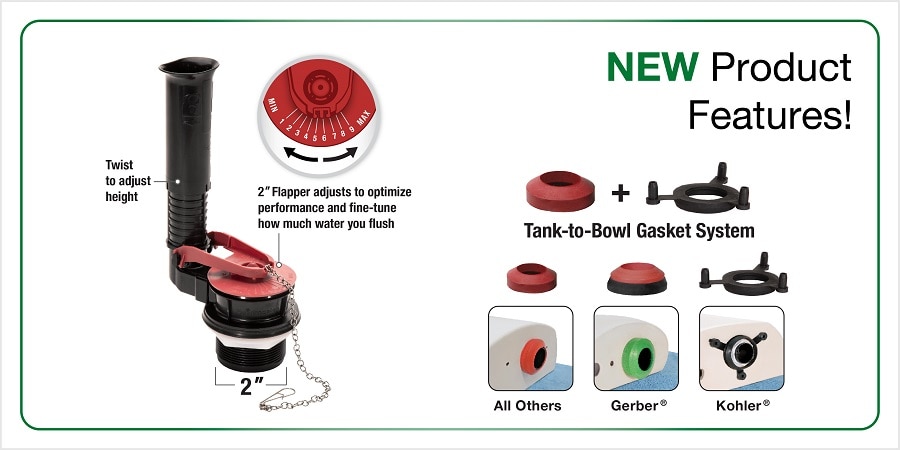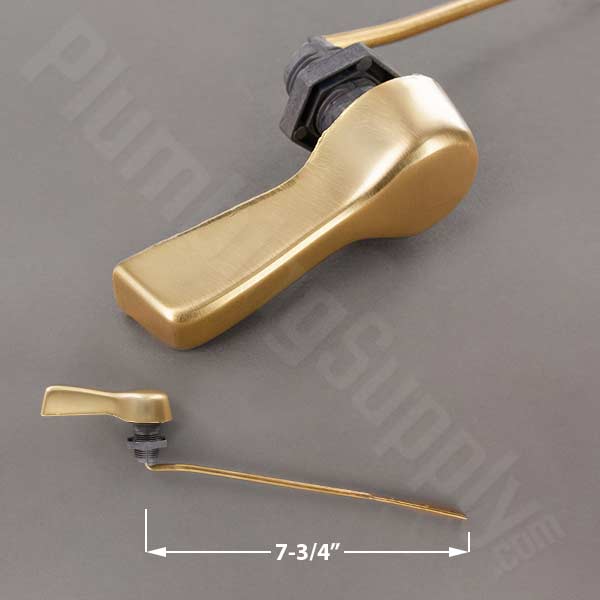

- #Instructions on installing everbilt tank lever install#
- #Instructions on installing everbilt tank lever full#
- #Instructions on installing everbilt tank lever free#
For this reason, it’s best to turn the lever on a ball valve slowly. One advantage to quarter-turn ball valves is that they can be opened or closed quickly, the disadvantage is that this makes water hammer more likely. A partially open ball valve, however, can leave the PTFE seats on either end of the ball susceptible to deformity from uneven pressure. You can control the flow by moving the lever between 0° and 90°. Rotation is clockwise for “OFF” (closed) and counter clockwise for “ON” (open).

The valve handle is marked showing proper rotation direction for “ON” and “OFF” positions. Special considerations may have to be taken with respect to pipeline expansions and contractions and the media expansion and contractions within the piping system. Valves should be installed in piping systems that comply with the applicable portions of the ASME B31 standards. The required approvals & certifications, pressure & temperature ratings, suitability of the valve component material, valve body and trim including the seats and seals are solely the responsibility of the system designer. With experience you will now when the tightening force feels “ right ” and you will know when to stop tightening before you damage the fitting or valve. Thread engagement outside of this range may indicate either under or over tightening of the joint or out of tolerance threads.
#Instructions on installing everbilt tank lever full#
As a general guideline, after hand-tight engagement, tighten an add itional 1-½ to 3 full turns for sizes up to 1 ”, for sizes 1-¼" and larger 1 to 2-½" full turns, you should have between 3 -1/2 and 6 threads engaged.

WARNING: Do not over tighten the valve onto the pipe, as it is possible to distort the internal parts of the valve and or cause a stress fracture in the valve body. Loosening valve, pipe and fitting connections will compromise the integrity of the seal and contribute to leakage and failure. CAUTION: Never back o ff a connection to achieve proper alignment. If the movement stops suddenly, you have probably bottomed out against the stop in the valve body. Then increase the tightening force a little i f each attempt gives less movement, continue to tighten until you have proper alignment and you should have a sound joint. #7 – Tighten until you can feel the joint start ing to seat and the fitting is almost pointing in the desired direction.

Pipe Wrenches should only be used on pipe and fittings. TIP: Brass and bronze alloys are softer metals than steel, always use a smooth-jawed wrench on the valve end and turn the valve onto the pipe. WARNING: Failure to follow this instruction will stress the body joint and may result in the leaking at the body joint. T his also prevents distortion of the internal parts of the valve. Position one wrench on the valve end closest to the pipe joint being tightened and the other wrench onto the pipe to prevent transmitting torque through the valve body joint, between the valve body and tailpiece. #6 – When installing two-piece body ball valves always use two wrenches when making up pipe joints to these valves. WARNING: Failure to properly support piping will void warranty and could result in structural failure and property damage Pipe supports must be capable of keeping the pipe in alignment and bearing the weight of the fittings, valves, pipe and its contents. Support the valve and piping in alignment to prevent any unnecessary stresses on the valve body by connecting the pipe. Maintaining proper pipe alignment during assembly eliminates unnecessary stress on the valve body. #5 – Valve and piping must be in alignment to prevent cross-threading, the male threaded fitting needs to be aligned with the axis of the tapped hole.
#Instructions on installing everbilt tank lever free#
#4 - Apply a high-quality pipe thread sealing compound or PTFE thread sealing tape following the manufactures application instructions to ensure a leak free pipe joint seal. #3 – Ensure the threaded pipe connections to be threaded into the valve are accurately threaded, clean and free of foreign material or metal shavings. #2 – Operate the valve from fully open to fully closed position. #1 – Inspect the ball valve ports, seating surfaces and threads to ensure they are clean and free of foreign debris.
#Instructions on installing everbilt tank lever install#
The best practice is to install with the valve stem facing upwards whenever possible. Installation upside down is not recommended because it can cause dirt to accumulate by the stem packing. The valve stem orientation is not critical, however any deviation from vertical is a compromise. VALVE ORIENTATION:īall valves may be installed in vertical or horizontal pipe runs, they are bi-directional therefore flow direction is not critical, however the best practice is to set up the valve handle to point in the direction of flow whenever possible. Follow these considerations and steps for an easy and hassle free installation. Threaded Ball valves can be installed correctly in just 7 Steps.


 0 kommentar(er)
0 kommentar(er)
